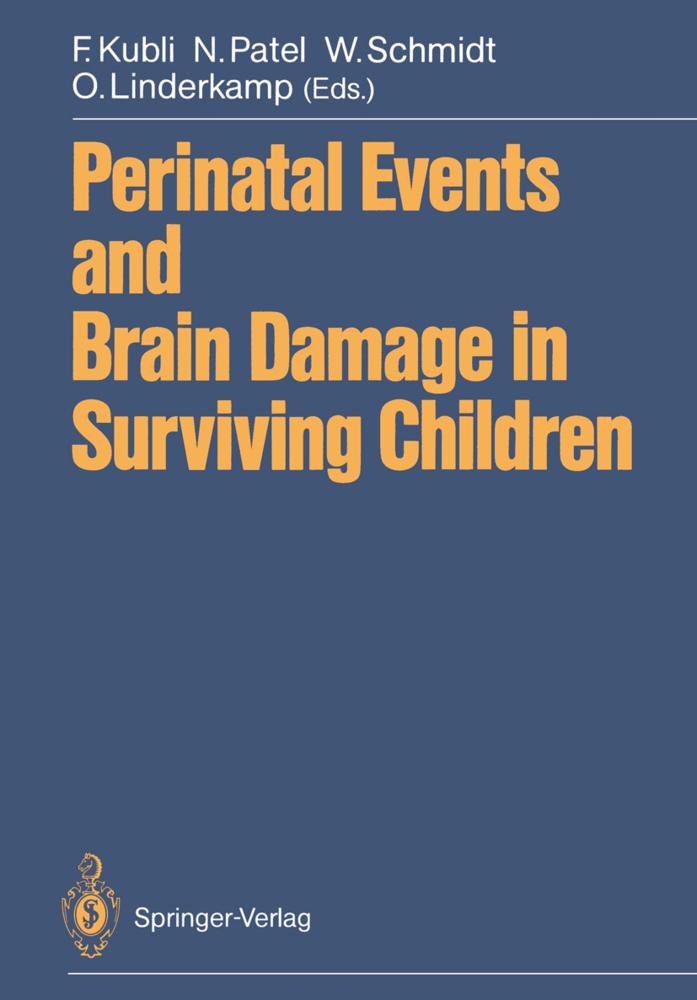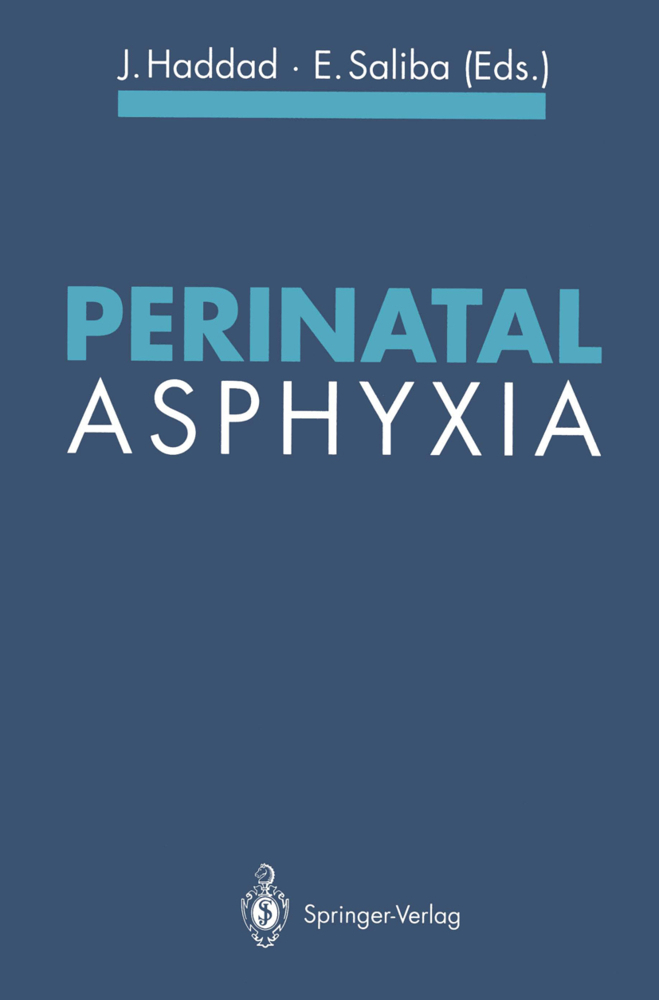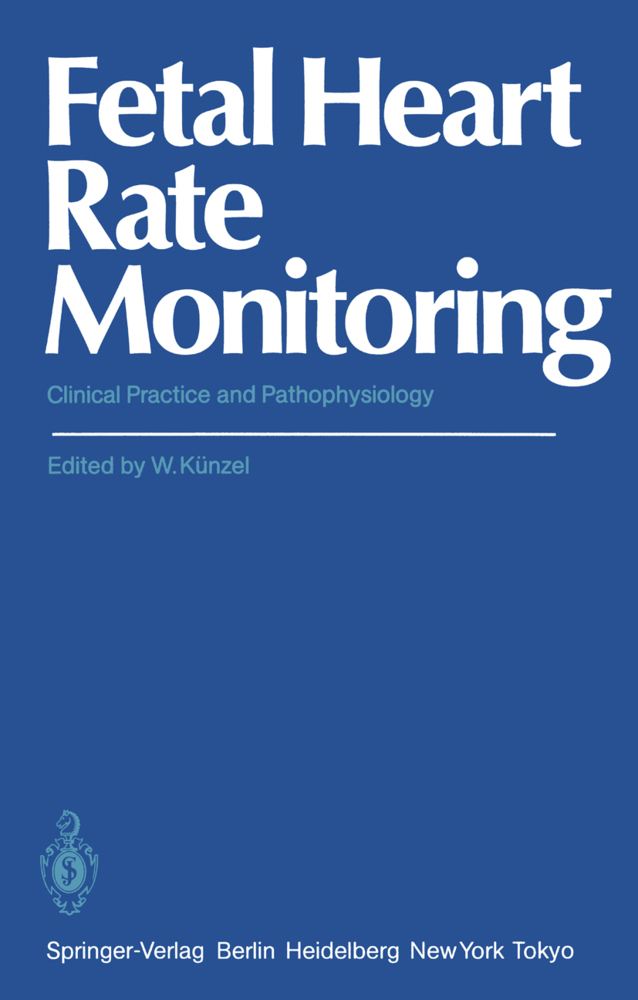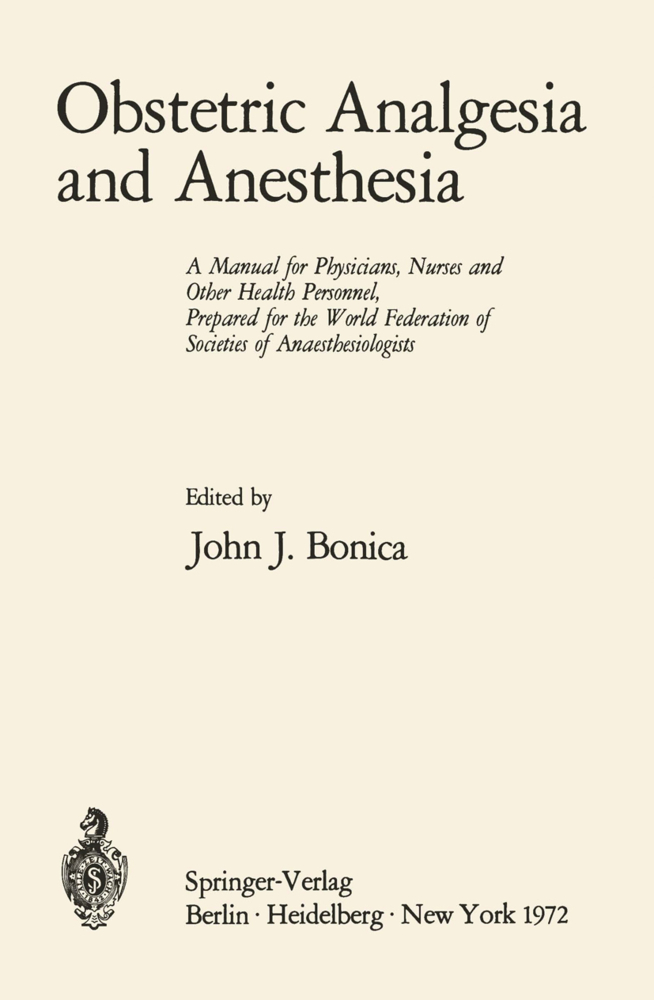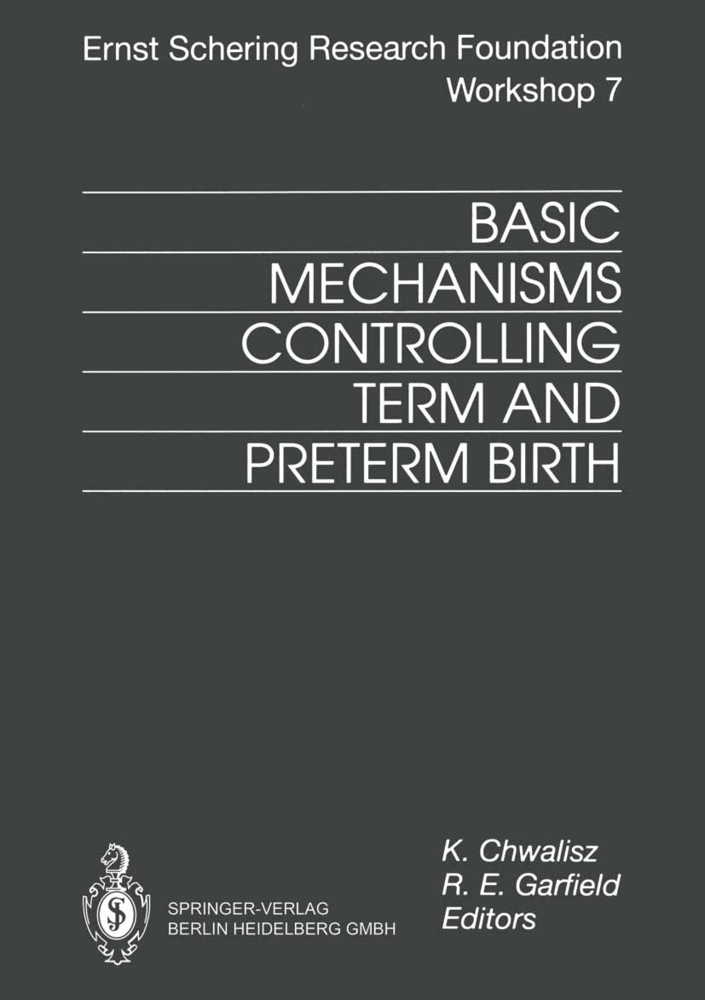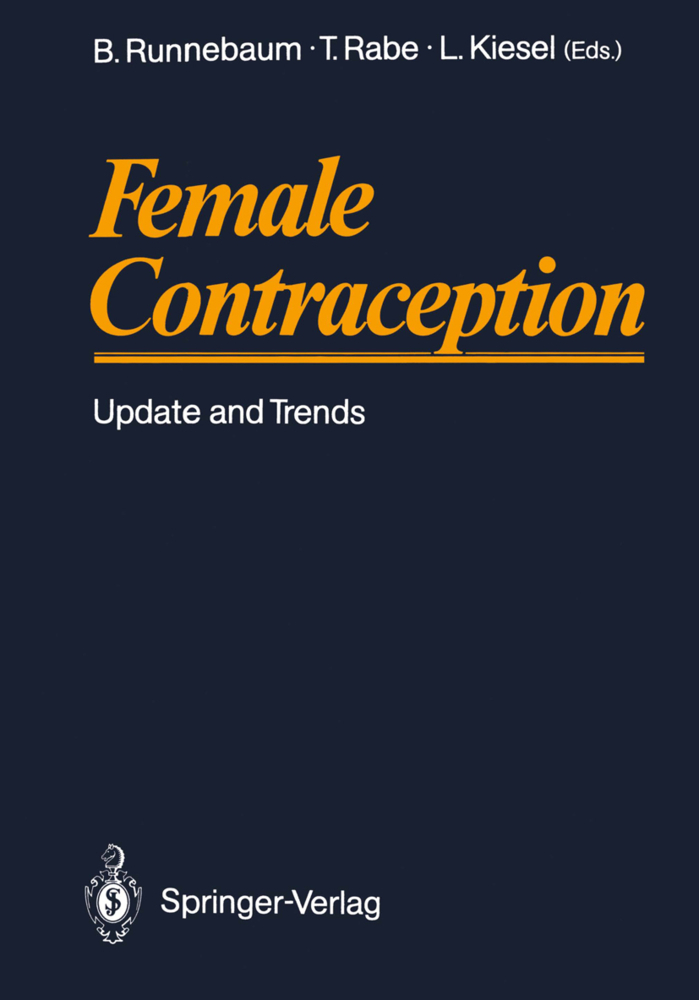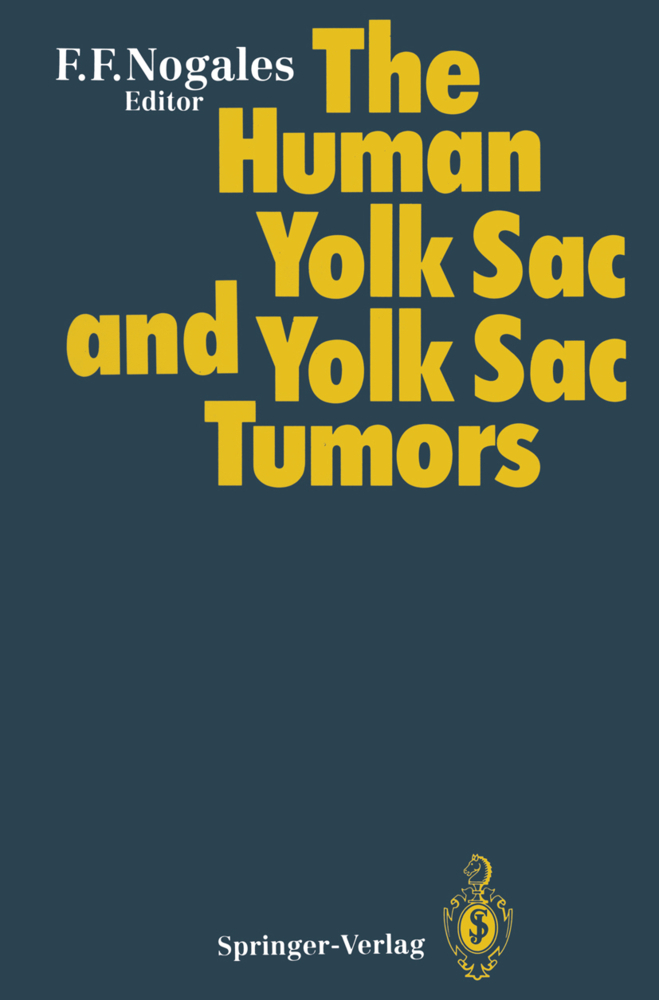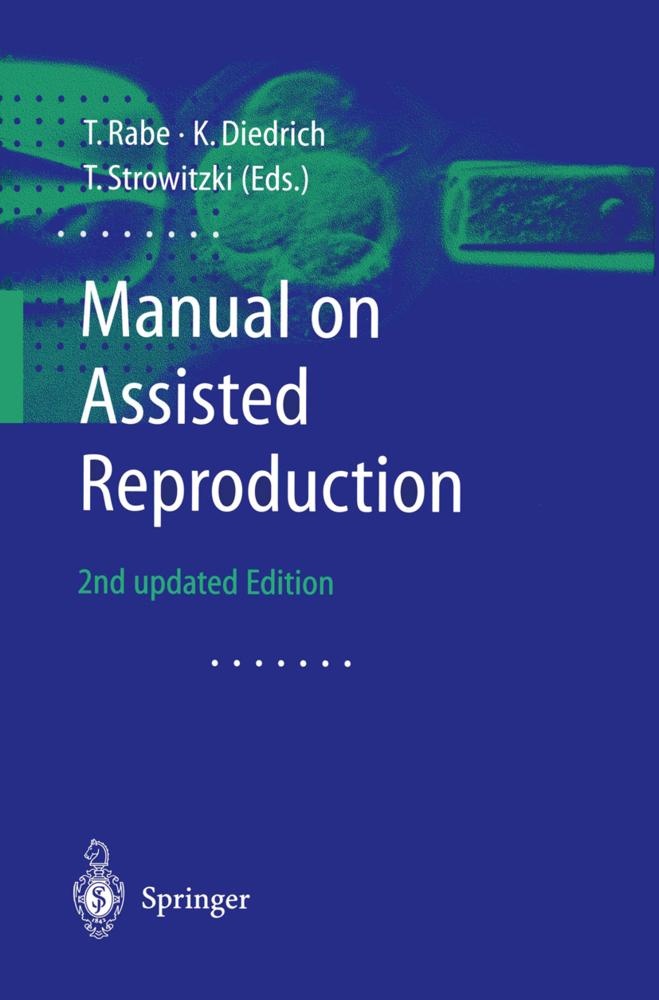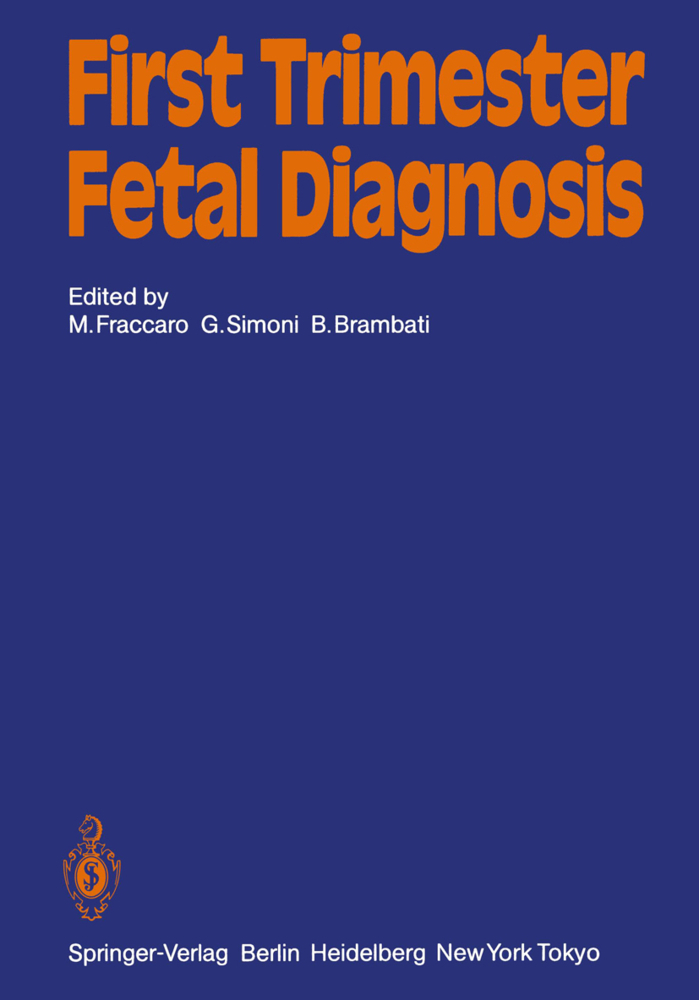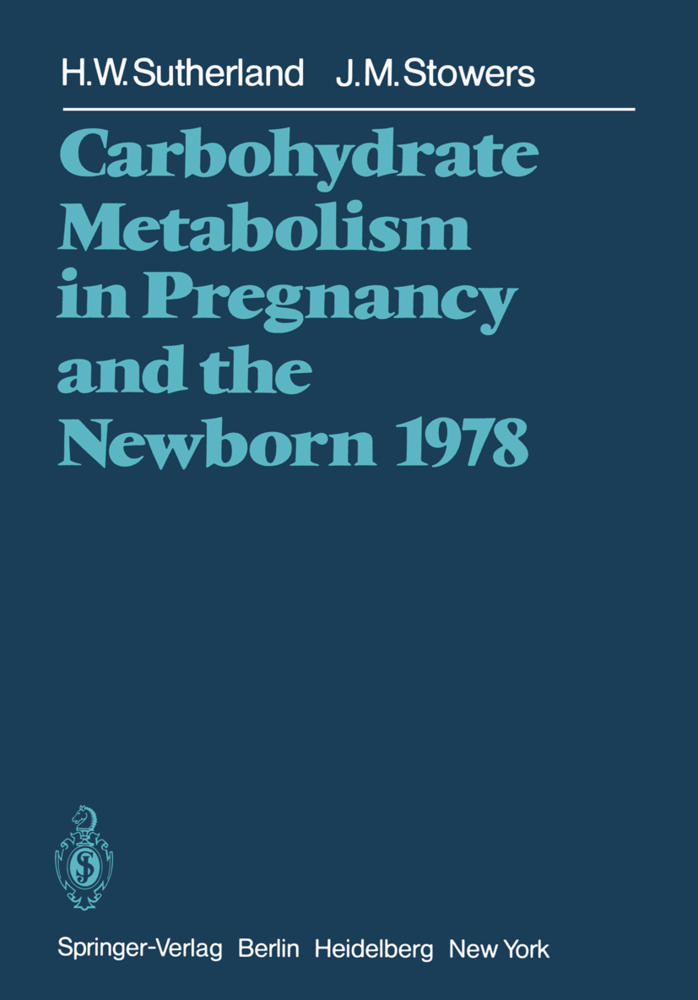Perinatal Events and Brain Damage in Surviving Children
Based on Papers Presented at an International Conference Held in Heidelberg in 1986
Perinatal Events and Brain Damage in Surviving Children
Based on Papers Presented at an International Conference Held in Heidelberg in 1986
Decision making in modem obstetrics and perinatology is con trolled by a variety of different factors, but there is little doubt that in industrialized countries one of the most powerful single factors is the concern and fear of causing permanent brain damage in the unborn and newborn. The dramatic increase in the rates of abdom inal deliveries in many parts of the world is certainly rooted to a substantial part in the ~bstetrician's concern not so much about possible perinatal death, but more so about permanent brain dam age in surviving children. This trend has been accelerated by the increasing number of litigations in connection with brain damage observed in many societies. This problem itself has many aspects, but it seems evident that litigation - justified or unjustified - is one modem expression of the human and social tragedy inflicted on individuals and families by the birth of a brain-damaged child. The medical, social, and human importance of the problem is in sharp contrast to the relative lack of scientific knowledge avail able. This became very clear when the National Institutes of Health published the excellent review in 1985 on "Prenatal and Perinatal Factors Associated with Brain Disorders" and its editor, J. M.
The Quantification of Risk Factors in Major Neurodevelopmental Disorders
Epidemiologic Panorama of Brain Impairments and Causative Factors - Swedish Experiences
Low Birthweight and Neurological Sequelae - A Summary of Some Swedish Studies
Biology and Pathogenetic Mechanisms
Genetic Factors Leading to Birth Defects and Diseases of the Newborn
Developmental Neurology of the Fetus and Newborn
Pathophysiological Mechanisms Leading to Permanent Brain Damage in Surviving Children
Trauma and the Developing Brain
How and When Does Antenatal Hypoxia Damage Fetal Brains?
Intrauterine Deprivation - Growth Retardation and Chronic Hypoxia
Antepartum Events and Cerebral Handicap
Available Evidence Relating Intrauterine Growth Retardation to Neuromotor Dysfunction and Mental Handicap
Growth Retardation: Individual Risk Assessment During Pregnancy
Management of Growth Retardation with a View to Preventing Neuromotor Dysfunction and Mental Handicaps .
Abnormal Antepartum Cardiotocogram and Neuromotor Dysfunction in Term and Preterm Babies
Antepartum Fetal Heart Rate and Movement Pattern in Relation to Oxygenation and Neonatal Neurological Morbidity
Intrapartum Asphyxia and Birth Trauma
Intrapartum Events and Cerebral Palsy
The Relationship Between Obstetrically Preventable Intrapartum Asphyxia, Abnormal Neonatal Neurological Signs and Subsequent Motor Impairment in Babies Born at or After Term
Available Evidence Relating Abnormal Intrapartum Fetal Acid Base Balance (pH) to Neuromotor Dysfunction and Mental Handicap
Intrapartum Cardiotocogram, Apgar Score and Acidaemia at Birth: Relationship to Neonatal Neurological Morbidity
Neurological Morbidity of Term Infants as an Indicator of SafeObstetrical Practice
Breech Delivery in the Term Fetus - Relation to Neuromotor Dysfunction and Mental Handicap
Intracranial Hemorrhage and Ischemia
Pathological Anatomy of Intraventricular Hemorrhage in the Preterai Baby
Hypoxia, Loss of Autoregulation and Intracranial Hemorrhage
Obstetrical Factors and Intracranial Hemorrhage
Prevention of Intraventricular Hemorrhage: Role of Atraumatic Birth and Sedation
Prediction of Outcome: Periventricular Hemorrhage Versus Ischemia
Magnetic Resonance Spectroscopy of the Brain and Early Neurodevelopmental Outcome
Prognosis of the Very Low Birthweight and Very Preterm Infant
Outcome of Very Low Birthweight or Very Preterm Infants with Special Consideration of Perinatal Events
Role of Transport for the Prognosis of the Very Low Birthweight Preterm Infant
Improved Outcome of Very Low Birthweight Infants 1977-1986. Critical Analysis of Results and Possible Mechanisms
Decreasing Incidence of Neurological Morbidity and Changes of Perinatal Care Strategies in Very Low Birthweight Infants
Prevention of Preterm Labor - A Means of Preventing Handicaps?
Recent Follow-up Studies
Causes of Handicap and Impairment in a Total Population of Dundee (Scotland) Children Aged 8 Weeks to 7 Years
The Uruguayan Follow-up Study of Perinatal Events and Mental Handicaps
First Results of the Multicenter Finnish-Bavarian Study
Neurological Sequelae of Infants with Very Low Birthweight in Hamburg - First Results of a Regional Study
Perinatal Mortality Statistics of the Avon County (UK) Population, 1976-1985, Using Figo 1982 Methodology.
Epidemiology
Definitions, Risks and IndicesThe Quantification of Risk Factors in Major Neurodevelopmental Disorders
Epidemiologic Panorama of Brain Impairments and Causative Factors - Swedish Experiences
Low Birthweight and Neurological Sequelae - A Summary of Some Swedish Studies
Biology and Pathogenetic Mechanisms
Genetic Factors Leading to Birth Defects and Diseases of the Newborn
Developmental Neurology of the Fetus and Newborn
Pathophysiological Mechanisms Leading to Permanent Brain Damage in Surviving Children
Trauma and the Developing Brain
How and When Does Antenatal Hypoxia Damage Fetal Brains?
Intrauterine Deprivation - Growth Retardation and Chronic Hypoxia
Antepartum Events and Cerebral Handicap
Available Evidence Relating Intrauterine Growth Retardation to Neuromotor Dysfunction and Mental Handicap
Growth Retardation: Individual Risk Assessment During Pregnancy
Management of Growth Retardation with a View to Preventing Neuromotor Dysfunction and Mental Handicaps .
Abnormal Antepartum Cardiotocogram and Neuromotor Dysfunction in Term and Preterm Babies
Antepartum Fetal Heart Rate and Movement Pattern in Relation to Oxygenation and Neonatal Neurological Morbidity
Intrapartum Asphyxia and Birth Trauma
Intrapartum Events and Cerebral Palsy
The Relationship Between Obstetrically Preventable Intrapartum Asphyxia, Abnormal Neonatal Neurological Signs and Subsequent Motor Impairment in Babies Born at or After Term
Available Evidence Relating Abnormal Intrapartum Fetal Acid Base Balance (pH) to Neuromotor Dysfunction and Mental Handicap
Intrapartum Cardiotocogram, Apgar Score and Acidaemia at Birth: Relationship to Neonatal Neurological Morbidity
Neurological Morbidity of Term Infants as an Indicator of SafeObstetrical Practice
Breech Delivery in the Term Fetus - Relation to Neuromotor Dysfunction and Mental Handicap
Intracranial Hemorrhage and Ischemia
Pathological Anatomy of Intraventricular Hemorrhage in the Preterai Baby
Hypoxia, Loss of Autoregulation and Intracranial Hemorrhage
Obstetrical Factors and Intracranial Hemorrhage
Prevention of Intraventricular Hemorrhage: Role of Atraumatic Birth and Sedation
Prediction of Outcome: Periventricular Hemorrhage Versus Ischemia
Magnetic Resonance Spectroscopy of the Brain and Early Neurodevelopmental Outcome
Prognosis of the Very Low Birthweight and Very Preterm Infant
Outcome of Very Low Birthweight or Very Preterm Infants with Special Consideration of Perinatal Events
Role of Transport for the Prognosis of the Very Low Birthweight Preterm Infant
Improved Outcome of Very Low Birthweight Infants 1977-1986. Critical Analysis of Results and Possible Mechanisms
Decreasing Incidence of Neurological Morbidity and Changes of Perinatal Care Strategies in Very Low Birthweight Infants
Prevention of Preterm Labor - A Means of Preventing Handicaps?
Recent Follow-up Studies
Causes of Handicap and Impairment in a Total Population of Dundee (Scotland) Children Aged 8 Weeks to 7 Years
The Uruguayan Follow-up Study of Perinatal Events and Mental Handicaps
First Results of the Multicenter Finnish-Bavarian Study
Neurological Sequelae of Infants with Very Low Birthweight in Hamburg - First Results of a Regional Study
Perinatal Mortality Statistics of the Avon County (UK) Population, 1976-1985, Using Figo 1982 Methodology.
Kubli, Fred
Patel, Naren
Schmidt, W.
Linderkamp, O.
| ISBN | 978-3-642-72852-5 |
|---|---|
| Artikelnummer | 9783642728525 |
| Medientyp | Buch |
| Copyrightjahr | 2011 |
| Verlag | Springer, Berlin |
| Umfang | XX, 338 Seiten |
| Abbildungen | XX, 338 p. |
| Sprache | Englisch |

